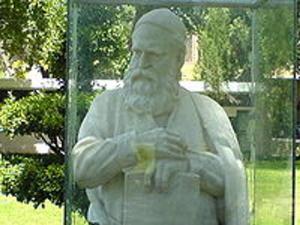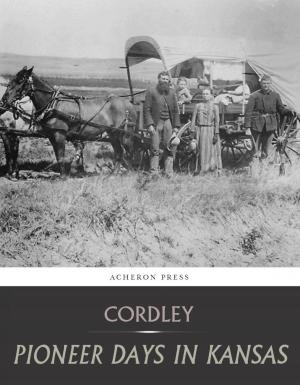The Journey of Alvar Nunez Cabeza de Vaca
Nonfiction, History, Americas, North America, Spain & Portugal| Author: | Alvar Nunez Cabeza de Vaca | ISBN: | 9781619822399 |
| Publisher: | Charles River Editors | Publication: | January 23, 2012 |
| Imprint: | Language: | English |
| Author: | Alvar Nunez Cabeza de Vaca |
| ISBN: | 9781619822399 |
| Publisher: | Charles River Editors |
| Publication: | January 23, 2012 |
| Imprint: | |
| Language: | English |
Álvar Núñez Cabeza de Vaca (Jerez de la Frontera, ca. 1488/1490 Valladolid, ca. 1557/1559) was a Spanish explorer of the New World, one of four survivors of the Narváez expedition. He is remembered as a proto-anthropologist for his detailed accounts of the many tribes of Native Americans, first published in 1542 as La Relación (The Report), and later known as Naufragios (Shipwrecks). In early 1527, Cabeza de Vaca departed Spain as a part of a royal expedition to occupy the mainland of North America. As treasurer, he was one of the chief officers of the Narváez expedition. Within several months of their landing near Tampa Bay, Florida on April 15, 1528, he and three other men would be the only survivors of the expedition party of 600 men. As the navigators were unsure of their location, Cabeza de Vaca thought it prudent to keep the land and sea forces together. Narváez and the other officers, excited by rumors of gold, overruled him and started off on a march through Florida, promptly getting lost. After several months of fighting native inhabitants through wilderness and swamp, the party reached Apalachee Bay with 242 men. They believed they were near other Spaniards in Mexico, but there were in fact 1500 miles of coast between them. Two craft with about 40 survivors, including Cabeza de Vaca, wrecked on or near Galveston Island. The explorers called it Malhado ("Misfortune"), or the Island of Doom. They made an attempt to repair the rafts, using what remained of their own clothes as oakum to plug holes, but they lost the rafts to a large wave. As the number of survivors dwindled rapidly, they were enslaved for a few years by various Native American tribes of the upper Gulf Coast. These included the Hans and the Capoques. Only four men, Cabeza de Vaca, Andrés Dorantes de Carranza, Alonso del Castillo Maldonado, and an enslaved Moroccan Berber named Esteban (later called Estevanico), survived and escaped to reach Mexico City. De Vaca later wrote a lengthy account of his journey.
Álvar Núñez Cabeza de Vaca (Jerez de la Frontera, ca. 1488/1490 Valladolid, ca. 1557/1559) was a Spanish explorer of the New World, one of four survivors of the Narváez expedition. He is remembered as a proto-anthropologist for his detailed accounts of the many tribes of Native Americans, first published in 1542 as La Relación (The Report), and later known as Naufragios (Shipwrecks). In early 1527, Cabeza de Vaca departed Spain as a part of a royal expedition to occupy the mainland of North America. As treasurer, he was one of the chief officers of the Narváez expedition. Within several months of their landing near Tampa Bay, Florida on April 15, 1528, he and three other men would be the only survivors of the expedition party of 600 men. As the navigators were unsure of their location, Cabeza de Vaca thought it prudent to keep the land and sea forces together. Narváez and the other officers, excited by rumors of gold, overruled him and started off on a march through Florida, promptly getting lost. After several months of fighting native inhabitants through wilderness and swamp, the party reached Apalachee Bay with 242 men. They believed they were near other Spaniards in Mexico, but there were in fact 1500 miles of coast between them. Two craft with about 40 survivors, including Cabeza de Vaca, wrecked on or near Galveston Island. The explorers called it Malhado ("Misfortune"), or the Island of Doom. They made an attempt to repair the rafts, using what remained of their own clothes as oakum to plug holes, but they lost the rafts to a large wave. As the number of survivors dwindled rapidly, they were enslaved for a few years by various Native American tribes of the upper Gulf Coast. These included the Hans and the Capoques. Only four men, Cabeza de Vaca, Andrés Dorantes de Carranza, Alonso del Castillo Maldonado, and an enslaved Moroccan Berber named Esteban (later called Estevanico), survived and escaped to reach Mexico City. De Vaca later wrote a lengthy account of his journey.















